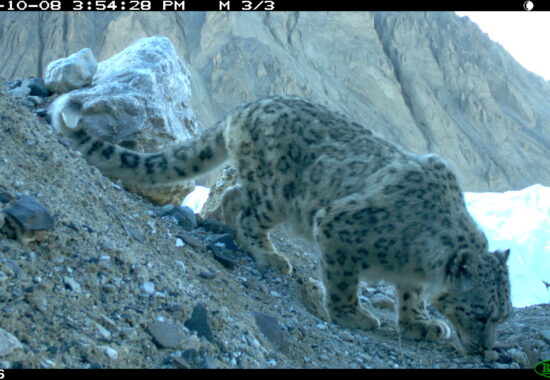

The markhor lives on precipitous cliffs of up to 3600 meters; similarly, the musk deer is considered to be associated with Birch forest and gullies. Conservation incentives like trophy hunting have made possible the augmentation of many wildlife species in their existing habitats. Most of the habitats of these species in Pakistan are mountainous, isolated and difficult for the animals to extend. This leaves wildlife biologists with only the option of introducing these animals to new areas, however, not knowing the suitability or availability of biotic and abiotic factors in the new habitat could lead to disaster. Thankfully, latest suitability models like Maxent and Biomod2 are capable of predicting the probability of factors that scientist deem as critical for the species. SLF is striving to predict such suitable habitats for the snow leopard, wolf, ibex, blue sheep, markhor, ladakh urial and brown bear in Pakistan. Wild animals usually need vast expanses of habitat to live and thrive. The rapid human growth and subsequent sprawl by human settlements into wildlife habitats or close to the periphery has resulted in the fragmentation of many wildlife pristine habitats. Wildlife corridor is a way of connecting these fragmented habitats by allowing movement between isolated patches of habitat without other disturbances, such as traffic or development. Carnivores such as the snow leopard require vast home ranges to survive. Therefore, maintaining such corridors that are critical for movement between two suitable habitats is inevitable. SLF is the first organization that has attempted to identify movement corridors for the snow leopard and wolf in Pakistan. These efforts have been made possible by using the circuit scape model that works on the concept of “electric current flow” by identifying conductance or resistance for the flow of current withing in a suitable habitat over a given landscape.